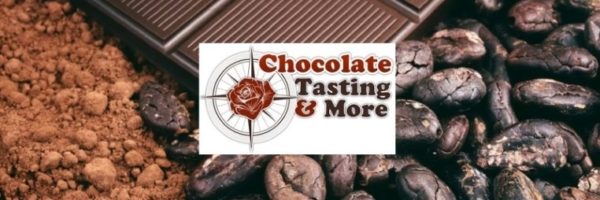Getting the Most Out of Your Next Chocolate Bar

Hold a piece of chocolate in your hand and you hold the end result of an amazing, global journey.
To fully appreciate the story chocolate has to tell us, one needs to visit a tropical rain forest. Within about 1200 miles north and south of the equator, the correct balance of rainfall, temperature and humidity creates the perfect environment for the cacao tree. Cacao, a broad leaf evergreen tree found beneath the forest’s canopy, thrives only within this narrow belt across the planet.
From the Tropical Rain Forest
The cacao tree has beautiful tiny flowers, only a quarter inch in size, which open only during the night. A gnat-like insect, called a midge (think small tropical no-see-ums), is primarily responsible for pollinating this tree. The young midges live down in the leaf liter. When the larvae turn into adults, they feed on the nectar, pollen and leaf petals of these small flowers. Not only are these insects responsible for the treat we all know and love, they also have the fastest wing beats of any creature, some say 20 times faster than a hummingbird.
The flowers, and the resulting pollinated football-sized pods, are situated directly on the trunk and branches of the tree. One can only image how surprised the early explorers were to see such an unusual sight. Many Europeans back home thought the early drawings by the explorers were incorrect and possibly the result of taking part in excessive native intoxicating beverages! Inside each pod are 40-50 beans surrounded by a like pulp which some says tastes like honey dew and is a favorite food of forest animals and young children alike.
To the Factory
This mixture of succulent pulp and bean mixture is then scooped out by hand out of the pod and place typically under banana leaves to ferment. The heat generated by the naturally occurring bacteria prepares the beans to unleash their flavors when later roasted. If the beans aren’t made into chocolate at the country of their origin, the beans are then dried, bagged, transported (sometimes by foot) to the nearest port, and shipped across the oceans to a factory to be further processed. Once at the factory the beans are cleaned, roasted and separated from the shell. They are then crushed and further mixed until the chocolate is produced and molded into bars and wrapped.
To the Taste Buds of Your Mouth
Slowly unwrap a chocolate bar. You begin tasting food before it ever enters your mouth. Your sense of sight is very powerful. Look at the surface of the chocolate. Is it shiny or dull? Feel it between your fingers. Does it melt slowly or quickly in your hand? Then smell the morsel. Now, bite into a piece of chocolate and let it melt on your tongue. This may require some patience and practice. Notice if the chocolate feels grainy or smooth in your mouth as well. You may experience an immediate blast of flavor, which then changes as the chocolate continues to melt in your mouth. Called a tasting arch, this parade of different flavors can be subtle or quite obvious. The lingering taste is just as important as the initial sensation.
It’s Personal
Whether tasting wine, cheeses, or chocolate, just remember that your experience is very personal. It is important to realize that everyone’s palate is unique. Some people have more acute sense of taste and smell. Others sense of taste or smell may have been dulled over time from allergies, smoking, etc. So be gentle with yourself. Don’t be intimidated if you can’t detect every flavor note written on the label. Have confidence in knowing that your tasting skills can continue to be developed over time.
The journey of a single cacao bean takes many twists and turns from a tree half way across the world to the taste buds of your mouth. That in itself is enough for total appreciation. Better yet, join us on one of our chocolate tasting programs and experience the magic of this amazing trek yourself.
Getting the Most Out of Your Next Chocolate Bar Read More »

